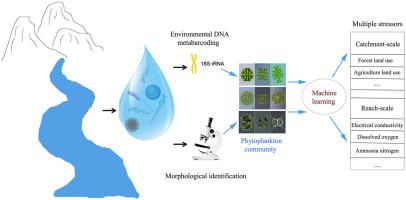Water Research ( IF 12.8 ) Pub Date : 2020-06-15 , DOI: 10.1016/j.watres.2020.116004 Juntao Fan 1 , Shuping Wang 1 , Hong Li 2 , Zhenguang Yan 1 , Yizhang Zhang 3 , Xin Zheng 1 , Pengyuan Wang 1

|
Understanding the ecological status response of rivers to multiple stressors is a precondition for river restoration and management. However, this requires the collection of appropriate data, including environmental variables and the status of aquatic organisms, and analysis via a suitable model that captures the nonlinear relationships between ecological status and various stressors. The morphological approach has been the standard data collection method employed for establishing the status of aquatic organisms. However, this approach is very laborious and restricted to a specific set of organisms. Recently, an environmental DNA (eDNA) metabarcoding data approach has been developed that is far more efficient than the morphological approach and potentially applicable to an unlimited set of organisms. However, it remains unclear how well eDNA metabarcoding data reflects the impacts of environmental stressors on aquatic ecosystems compared with morphological data, which is essential for clarifying the potential applications of eDNA metabarcoding data in the ecological monitoring and management of rivers. The present work addresses this issue by modeling organism diversity based on three indices with respect to multiple environmental variables in both the catchment and reach scales. This is done by corresponding support vector machine (SVM) models constructed from eDNA metabarcoding and morphological data on 24 sampling locations in the Taizi River basin, China. According to the mean absolute percent error (MAPE) between the measured diversity index values and the index values predicted by the SVM models, the SVM models constructed from eDNA metabarcoding data (MAPE = 3.87) provide more accurate predictions than the SVM models constructed from morphological data (MAPE = 28.36), revealing that the eDNA metabarcoding data better reflects environmental conditions. In addition, the sensitivity of SVM model predictions of the ecological indices for both catchment-scale and reach-scale stressors is evaluated, and the stressors having the greatest impact on the ecological status of rivers are identified. The results demonstrate that the ecological status of rivers is more sensitive to environmental stressors at the reach scale than to stressors at the catchment scale. Therefore, our study is helpful in exploring the potential applications of eDNA metabarcoding data and SVM modeling in the ecological monitoring and management of rivers.



























 京公网安备 11010802027423号
京公网安备 11010802027423号